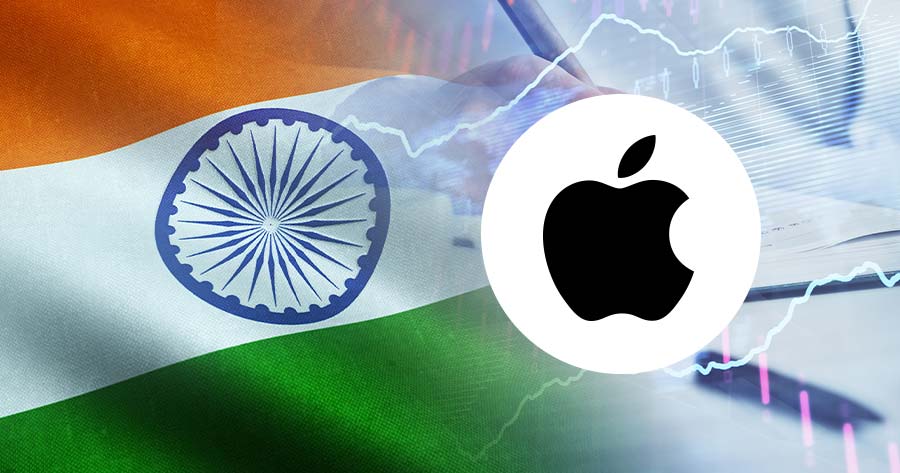Apple Inc. is doubling down on its India manufacturing strategy, with key suppliers moving full steam ahead to mass produce the upcoming iPhone model in the country, according to a report by Nikkei Asia. This marks a pivotal shift in Apple’s global supply chain, as the tech giant aims to reduce its reliance on China and position India as a central hub for iPhone production.
The move is part of Apple’s broader diversification strategy, driven by geopolitical tensions, trade uncertainties, and the need for supply chain resilience. Suppliers including Foxconn, Tata Electronics, and Pegatron are leading the charge, with Apple reportedly targeting production of at least 50 million units in India this year.
India’s Rise in Apple’s Global Strategy
India’s emergence as a key manufacturing base for Apple has been years in the making. In the 12 months ending March 2025, India assembled iPhones worth ₹1.88 lakh crore (US$22 billion), a 60% year-on-year increase. Of this, ₹1.48 lakh crore (US$17.4 billion) worth was exported, underscoring India’s growing role in Apple’s global operations.
Tata Electronics, which acquired Wistron’s India unit, now accounts for 35% of iPhone output in the country. Foxconn holds the remaining 65% and recently committed ₹12,828 crore (US$1.5 billion) in fresh investment to expand its facility near Bengaluru. Pegatron, meanwhile, continues to scale operations in Tamil Nadu.
Apple’s goal is to shift the majority of US-bound iPhone production to India by the end of 2026—a move that could redefine the global electronics manufacturing landscape.
Why the Shift from China?
Apple’s pivot away from China is driven by multiple factors:
-
Escalating US-China trade tensions, including potential tariffs on smartphones and laptops
-
Tightened customs screenings in China, delaying the export of essential production equipment
-
COVID-era disruptions, which exposed vulnerabilities in centralized manufacturing hubs
-
Cost advantages in India, where production costs are significantly lower than in the US or China
According to Nikkei Asia, Apple has instructed suppliers to move as many components as possible from China to Southeast Asia and India. Some suppliers have even been asked to ship inventories by air to bypass customs delays.
Challenges and Opportunities
While India offers a compelling alternative, the transition is not without hurdles. Factory utilization in India is already near maximum capacity, and the country’s supply chain—though improving—still lags behind China’s dense manufacturing ecosystem.
Quality control, logistics efficiency, and labor management remain areas of concern. However, the Indian government’s Production Linked Incentive (PLI) scheme has helped mitigate some of these challenges by offering financial incentives to manufacturers.
Apple’s suppliers have received substantial PLI payouts: Tata received ₹2,068 crore (US$241.81 million), and Foxconn ₹2,807 crore (US$328.22 million) between FY23 and FY25.
What This Means for Consumers and the Industry
For Indian consumers, this shift could mean faster availability of new iPhone models and potentially more competitive pricing. For Apple, it’s a strategic hedge against geopolitical risk and a way to future-proof its supply chain.
Industry analysts view this as a watershed moment in global electronics manufacturing. India is no longer just a backup—it’s becoming a cornerstone of Apple’s production strategy.
Sources: Nikkei Asia via Times of India, IBEF, Tech in Asia, Global Financial Market Review

